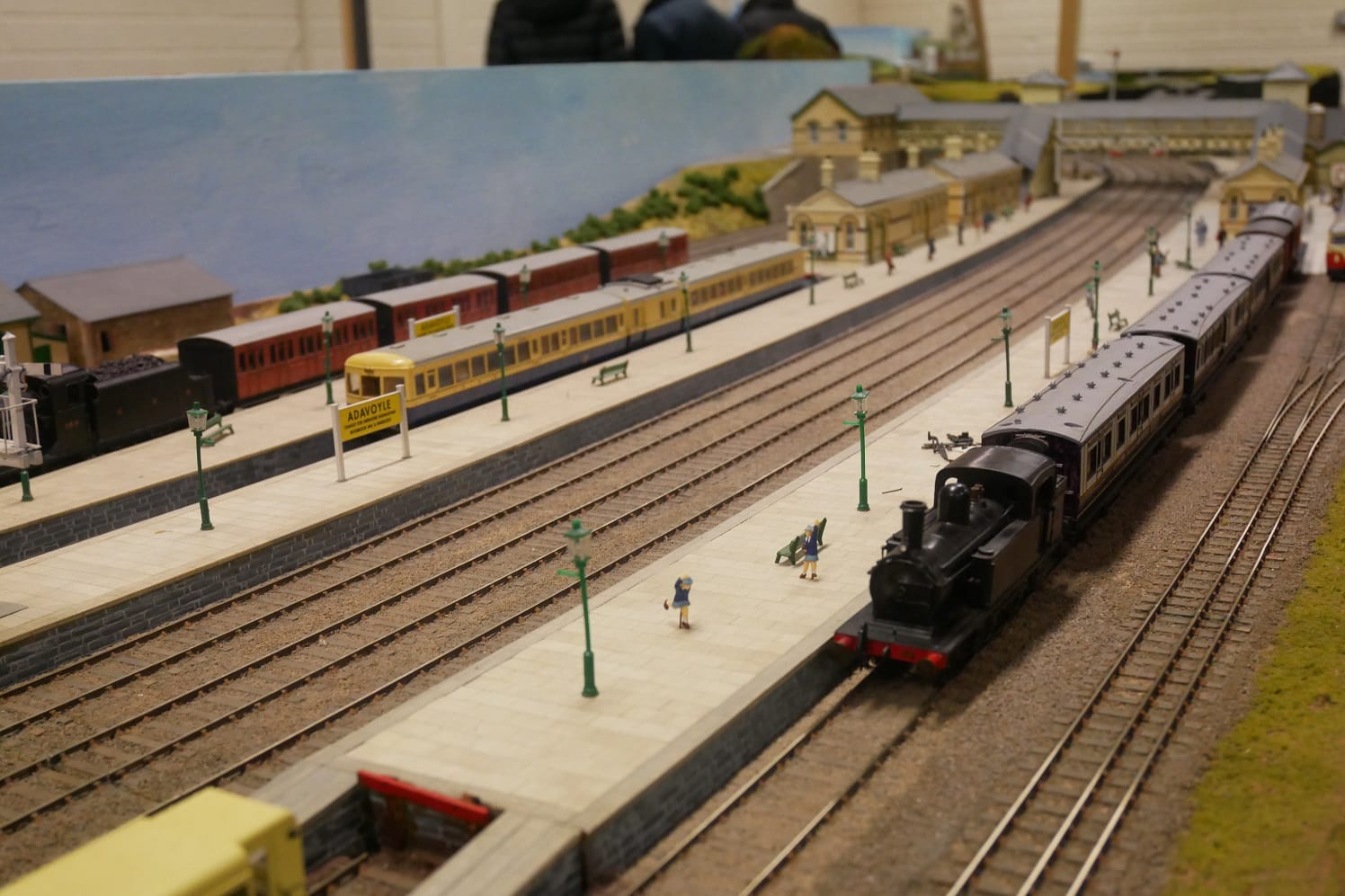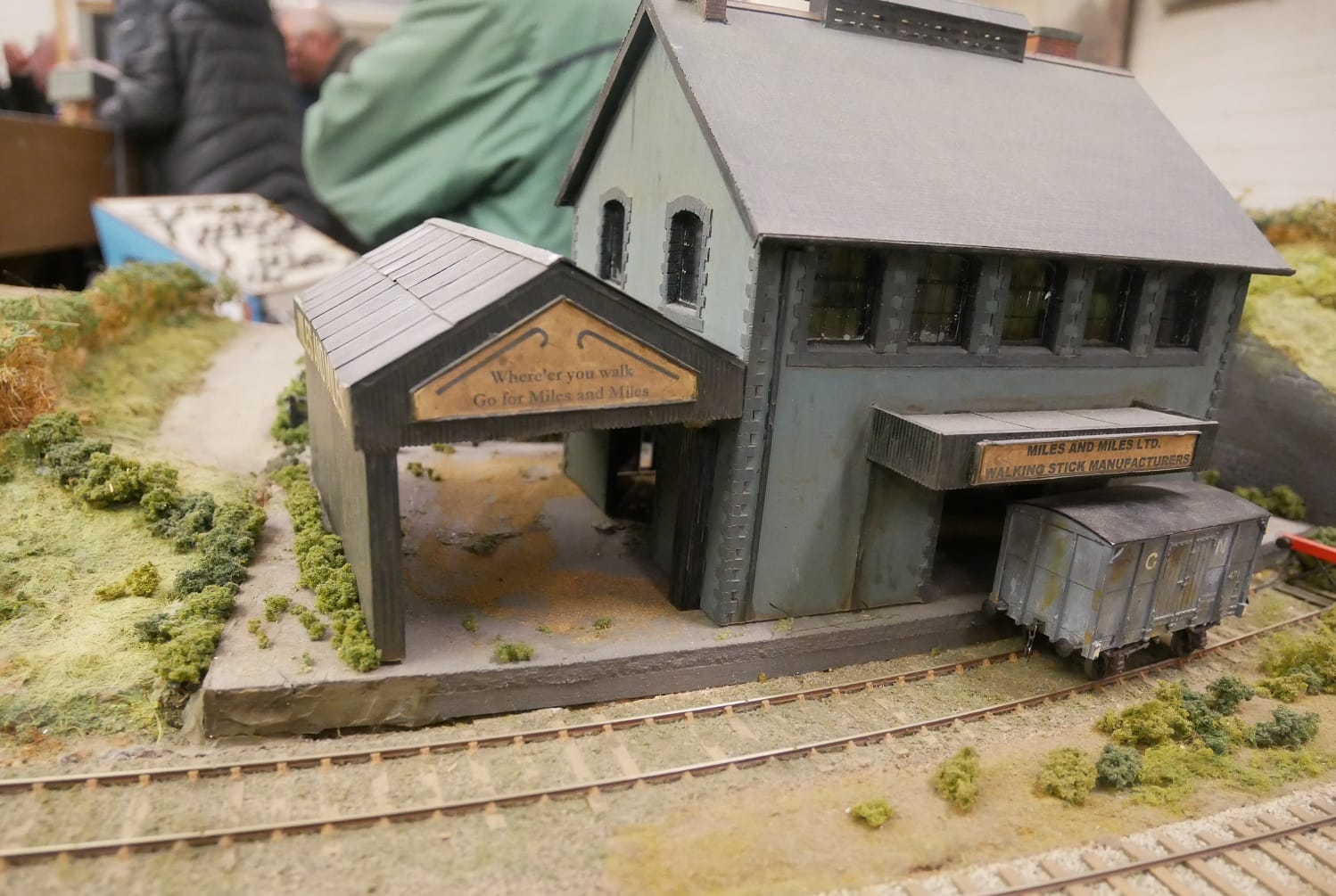Nobody caught illegally dumping yet by new north inner-city CCTV
But the scheme is a success, said a council official's report, as that shows the cameras are a deterrent.
The South Dublin Model Railway Club is stuffed with tracks, trains and literature – all lovingly cared for by its members. But they say their hobby is fading.

The South Dublin Model Railway Club is hidden away from view, in a two-storey iron building, on a small lot by the Knocklyon Road Bridge, behind a church.
If you can find it, though, within its walls there’s a sort of museum of model railways, stuffed with tracks, trains and literature – all lovingly cared for by the club’s members and friends.
On Wednesday evenings, members of the 44-year-old club, many of them retired, sit in the common room library, drinking tea and talking about their models.
“It calms you down,” says Martin O’Hanlon, who has been a member for 35 years. “You can get away from the real world and just enjoy a hobby.”
With the cost of model trains increasing, and fewer younger people interested in collecting them, the hobby could soon be lost to the ages, some club members say.
The club, founded in 1975, only found a permanent home 16 years ago.
Paul Reynolds, its president, is a tall man, with a quiet, deep voice.
The club’s headquarters hopped from location to location: community centre halls and sheds behind people’s homes, he says.
Eventually, the club heard of small parcel of land belonging to South Dublin County Council, leftover from the construction of the M50 and successfully applied for planning permission, says Reynolds.
They got a small grant too, he says. “It just about covered the cost of the four walls and roof.”

Over an 18-month period, the club’s members laboured and poured money into constructing the building. “It was just hard graft,” Reynolds says.
Luckily, a lot of members of the club happened to be tradesmen, he says. “There were a lot of skills we could call on.”
Upstairs, O’Hanlon stands in one corner of the large room, operating a more industrial-looking railway on a large, oblong track.
By turning the knob of a controller at one end of it, he can change the electrical input of the different wires that power the model.
It keeps tipping over when it zips over one of the junctions.
The older models wobble, O’Hanlon says. “The connections have to be spot on.”
Some of the model trains that the club has date back to the ’50s, he says.
“They were mass-produced in the ’50s and ’60s for kids, whereas the modern-day models are really for adults,” he says.
“A modern model train is chipped, it’s digital. That would set you back the best part of €150 or €160 just for a single unit,” he says.
This is alienating the younger generation, he says. “It’s hard to get young people into the club.”
The enthusiasm for model railways, in general, has been eroded by mobile phones and computers, he says.
But O’Hanlon, who worked in the motor industry for 48 years, is not one to reject technology. Electric cars are the future, he says.
Downstairs, Reynolds, the club president, says the same: “There’s no pipeline of younger people.”
But that’s true with a lot of craft hobbies nowadays, he says.
The club’s tea room doubles as a library. There are neatly organised shelves holding stacks of model-railway magazines dating back to 1935.
There’s an old fashioned signal light with green glass inside sitting on a shelf. “It would be at least 100 years old,” Reynolds says.
Behind a display case, there’s a recreation of a section of a town, with a train line across the front. There are small, red-brick terraced homes, a church, a field with sheep and cows and lots of small coniferous trees.
Some of the layouts date back to the ’60s.
One of the club’s most coveted possessions is Adavoyle Junction, a model entirely handmade by a man called Tony Miles and his team. It was gifted to the club before Miles’ passing in 2013.
It’s incredibly detailed. It’s got small, yellow buildings: offices sitting on the platforms with tiny, painted advertisements and posters on the sides.
A yellow, sheltered walkway goes over the tracks. Another bridge beyond the station has immovable lorries and 1960s-style car figurines passing through.
On the tiny platforms stand figurines of conductors blowing whistles and commuters wearing coats and holding briefcases, school children in their uniforms. There are green, wooden-looking benches, some tipped over.
The trains come in varying colours and sizes. Look closely and you’ll see the tiny steel-look rivets, the outline of lumps of coal sitting on a hopper wagon and the bricks on the buildings.
Laurence Hendry comes up. “This railway is famous,” he says, with a Scottish accent. “It’s been seen on the exhibition circuit in England.”
Hendry lives in Suffolk and came over to the South Dublin Model Railway Club’s three-day Models and Hobbies Exhibition in Blackrock College last weekend.
“All the track is handmade,” says member Leslie Burbridge. This includes the little buildings and figurines. And the Adavoyle model measurements are rare.
“It’s Irish, so it’s broad gauge,” Burbridge says. He explains that the gauge is the distance between the rails. Broad gauge is wider than standard gauge, which is used in England.
“In England, [the width] is 4 ft 8 ½ in. In Ireland, it’s 5 ft 3in,” says Hendry of the real-life measurements.
Model railways are built using a protofour or P4 standard, meaning that the scale used is 4mm to 1 foot.
In the common room, a group of members pore over glossy black-and-white photographs of Irish trains and stations, their cups of tea and coffee carefully placed out of reach.
The photos were taken by John Kennedy. “I worked in the manuscripts in Trinity college,” he says, holding up a photograph.
“Whenever I had a spare minute, I’d be found in an engine shed with the working men, coal, water and dirty engines,” he says.
For Reynolds, who has been with the club since the start, staying a member of the club has been easy. “It’s the friendships you make and the camaraderie.”
Leslie Burbridge has been a member for over 40 years. As a kid, he used to climb on top of a wall by Harcourt Street station and watch the trains go by.
“I saw a model railway layout in the window of Geary’s shop, at the top of Grafton Street and it was the first [one] I saw,” he says. That’s where his fascination began, he says.
Burbridge lives all the way in Greystones but still comes to the club nearly every week.
“It’s like a men’s shed,” he says. “It’s somewhere to go every Wednesday when my wife is at a fitness class nearby.”

Every April, a few members of the club travel to Dortmund, Germany for a four-day trade fair for model making and model sport.
It’s one of the highlights of O’Hanlon’s year. “Santi does not come from the North Pole, he comes from Dortmund,” he says.
Derek Russell-Hill, an engineer, is one of the more hands-on members, who likes building the railways.
“There’s a wide variety of members,” he says, sitting with a stack of Kennedy’s photos. “There are people who like history, there’s those of us who like to build, operate or just talk.”
The meetings are mainly informal, says Reynolds. Membership is €200 annually.
“We’re always looking for new members,” he says. “I always tell people who are interested to come to a few meetings first.”